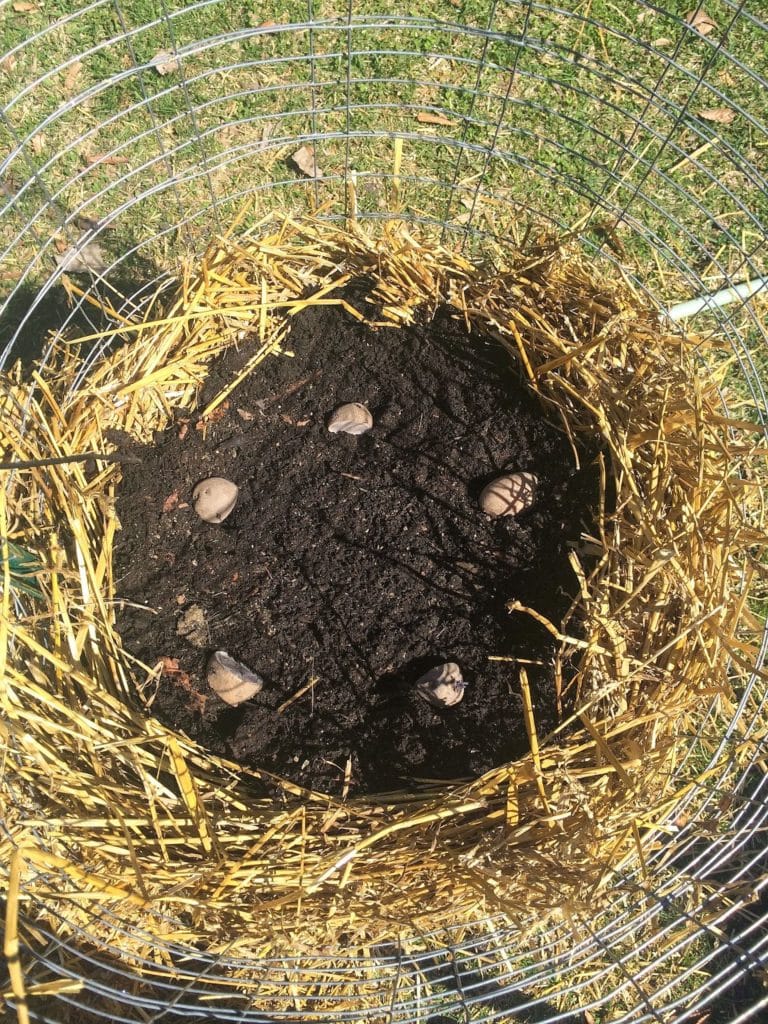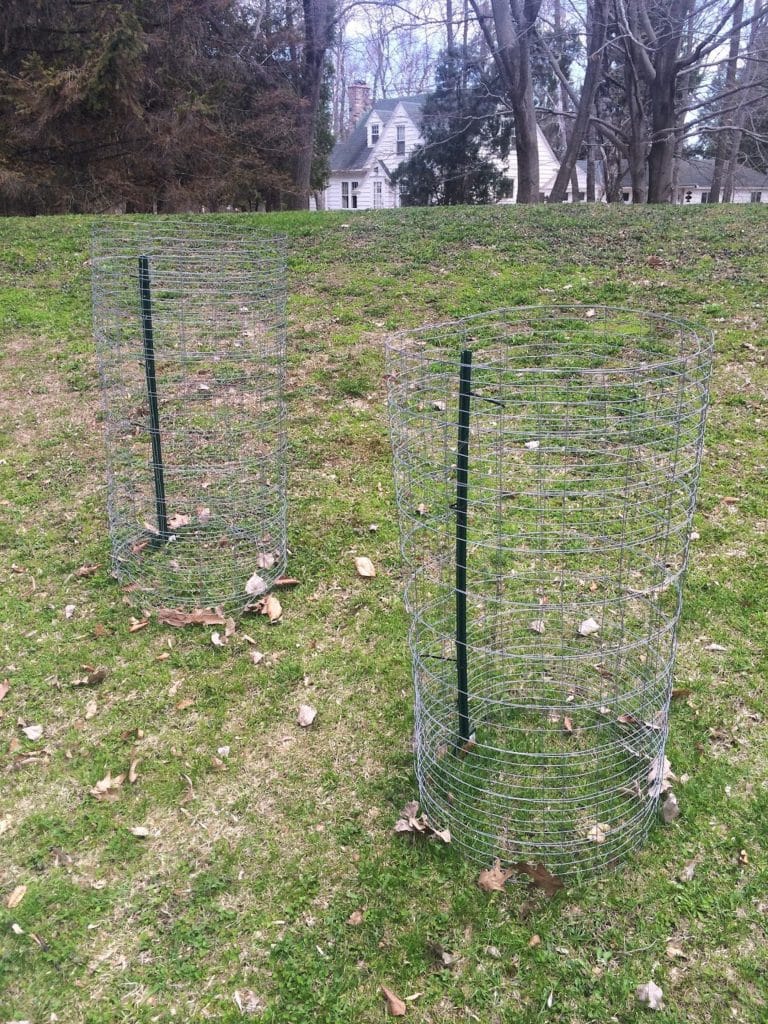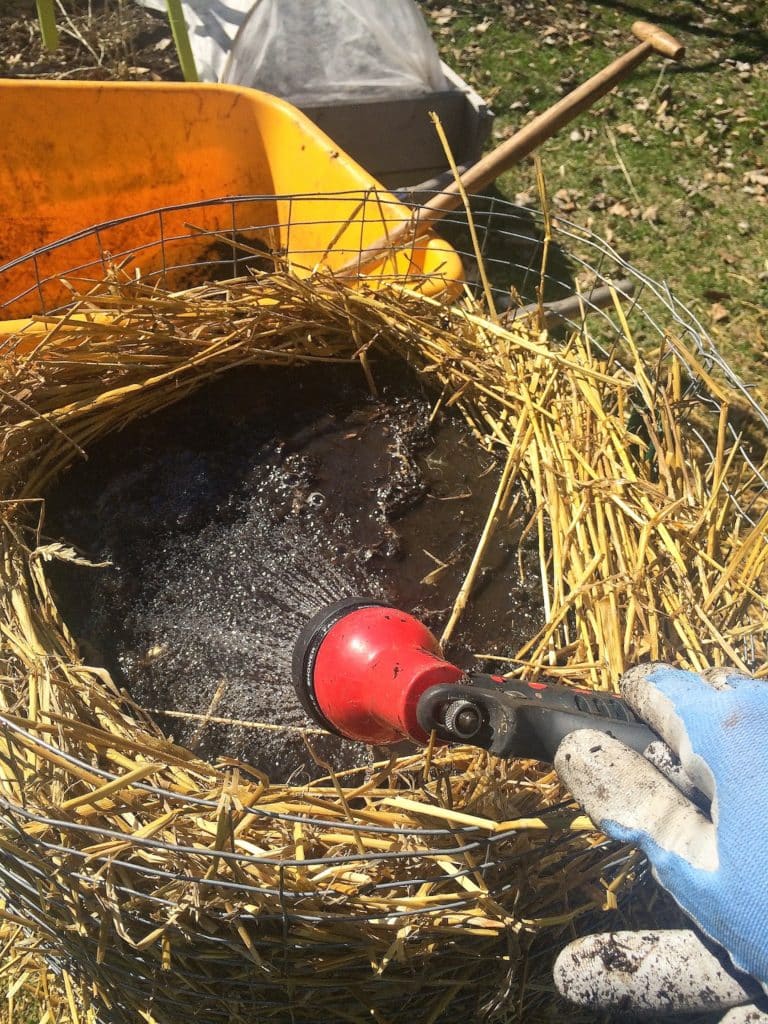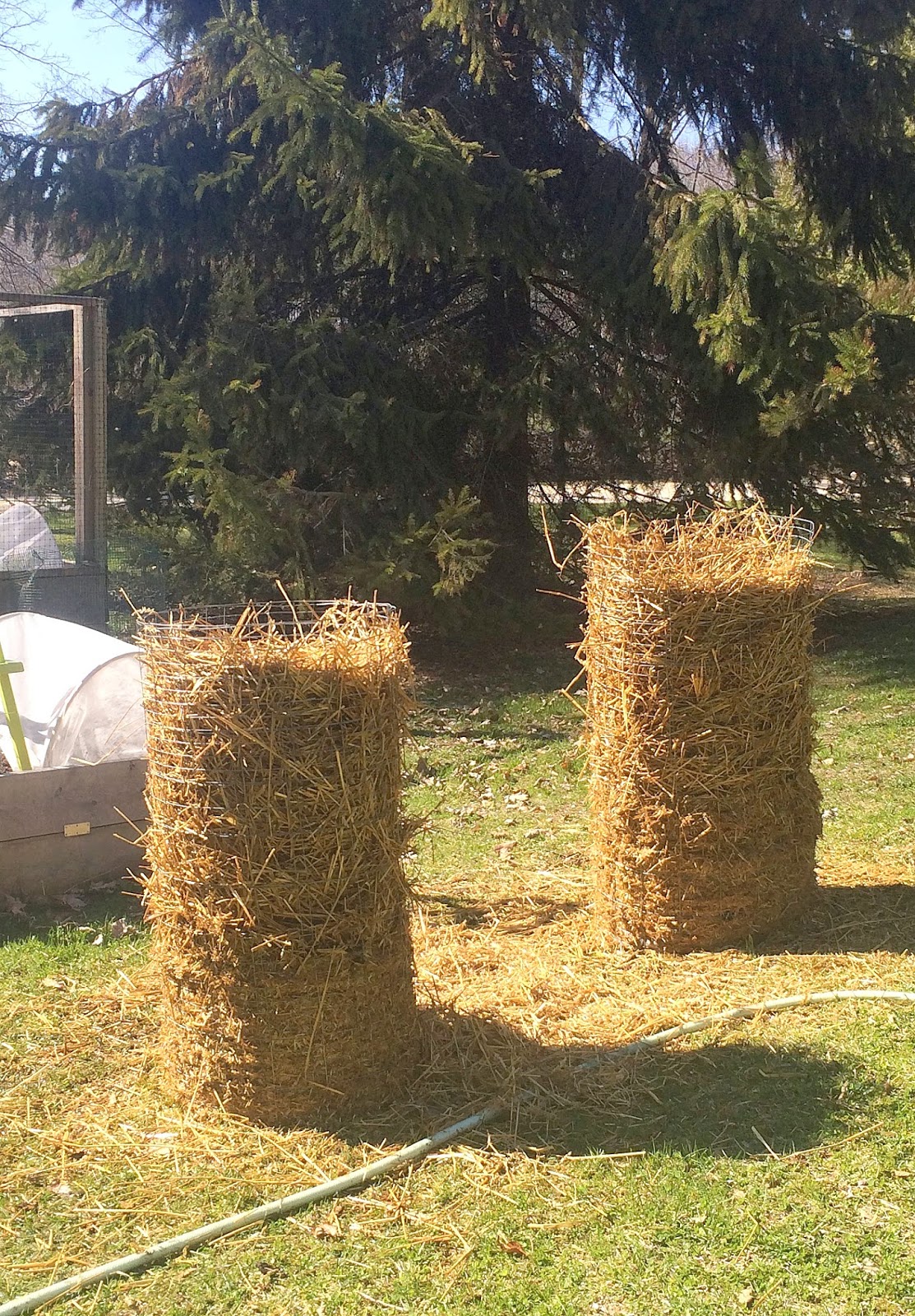I’ve been intrigued with some of less traditional ways of growing potatoes, including in grow bags and even garbage bags. But to me, the potato tower idea made more sense.
There are several methods for creating a potato tower. I read about a lot of them, including several on Pinterest and one from Fine Gardening magazine, and came up with an amalgamation.
I started with a metal fence support, just the green kind that you pound in to the ground. Then I used plastic wire ties (aka zip ties) to attach a circle of fencing to the post. The instructions I read all used different types of fencing. I avoided hardwire cloth, which typical has half-inch squares because it seemed like that would be hard for stems and leaves to sneak through. Instead, I bought rabbit fencing, which has 1-inch by 4-inch holes on the bottom and 4-inch square holes on the top. I did a double layer of fencing, flipping the bottom to the top on the second layer, just so the holes weren’t so large.
 |
| The sprouts or eyes on the potatoes faced outward. Some layers got three potates, but then I was running out of room, so I put a few more in on upper layers. |
Then I started the layering. I did four layers in each of my two towers. Each layer is constructed by putting down a bed of straw and lining the edges with about a 2- or 3-inch thickness of straw, then putting in a “core” of soil in the middle. For the soil, I used a combination of purchased top soil and mushroom compost or leaf compost. On the soil layer, I threw in about 4 or 5 inches of blended soil, then put in the seed potatoes, a few inches in from the edges with the eyes or sprouts facing outward. I covered it with an equal amount of soil and watered it thoroughly. That completes a layer.
Then I just repeated that process in each tower. Since I was doing two towers, I found it easier to do a layer in each tower before moving onto the next tower. The key is to keep the straw on the outside packed pretty tight to keep the soil in and the light out.
When I got to the final layer, I left some room at the top of the tower to add more mulch as needed to continue covering the shoots. I also watered the entire tower really well. One of the negative comments about potato towers is that they dry out too much and it’s difficult to keep the potatoes properly watered, so I intend to keep a close watch on that.
If all goes well, the towers should be covered in leaves as the potatoes grow (which I sincerely hope because they are not the most attractive things) and when it’s time to harvest, I should be able to just knock the towers over, pull out the potatoes and compost everything else.
I’m willing to experiment a little to get some great potatoes, but I think it’s safe to say this is probably not one of those money-saving things. I had to buy everything for this project. Granted, I can reuse almost all of it in future years, but there was definitely an upfront cost. And obviously I didn’t need an entire roll of rabbit fencing, but I had to buy a whole roll to get what I needed so I’m including the entire roll cost in my tally.
So here’s the cost so far:
- Metal stakes: $2.80 for two
- Roll of rabbit fencing: $28
- Straw (I had a bag of the chopped up stuff for seeding lawns plus purchased a bale): $1.50
- Soil: $25 (approximate)
- Potatoes: $25 from here (There are definitely less expensive potatoes, including organic, out there, but for various reasons that’s what I went with).
Interested in how this turned out? Check out the end-of-the-summer results here.





9 Responses
Hopefully you can now save your seed potatoes for next year! This is a fun idea and look like more work up front but maybe less in the long run what all of the digging in and up of potatoes. I am trying them in my garden this year as well. I have german butterball, fingerling, kennebec and the baby reds all organic that I bought from our local co-op. Are there any amendments you recommend for them?
This is really cool! Can't wait to see how it turns out. Organic potatoes are nearly $5 a pound and I love how easy the setup looks
I had not heard of this method. I use grow bags. After the initial investment, they have held up and produced loads of potatoes for me. We only grow the blue potatoes as they are loaded with antioxidants…and we also are organic…hard to find organic potatoes in the grocery store. I will watch how your towers progress with great interest.
I've heard great things about using grow bags. If this experiment fails maybe I'll try that next.
Good luck with this experiment! I've been wanting to try it, but I'll wait another year to see how you make out. Twenty-two pounds of potatoes sounds like a lot of potatoes. But really I don't think it should be hard to achieve that with two towers.
I don't know … I bet that is ambitious, but I'm willing to try almost anything at least once!
I've heard of doing spuds in pots/bags but not come across these towers before – I'll be intrigued to see how you get on. Do you know how many seed potatoes you fitted in?
HI Jenny! It was a total of 3 pounds of seed potatoes. At least that's what I ordered. Some of them were loaded with eyes so I but them into pieces.
This is really cool! I grow sweet potatoes in pots but have never grown regular potatoes. These will be beautiful when they are covered with foliage. Very cool idea! :o)